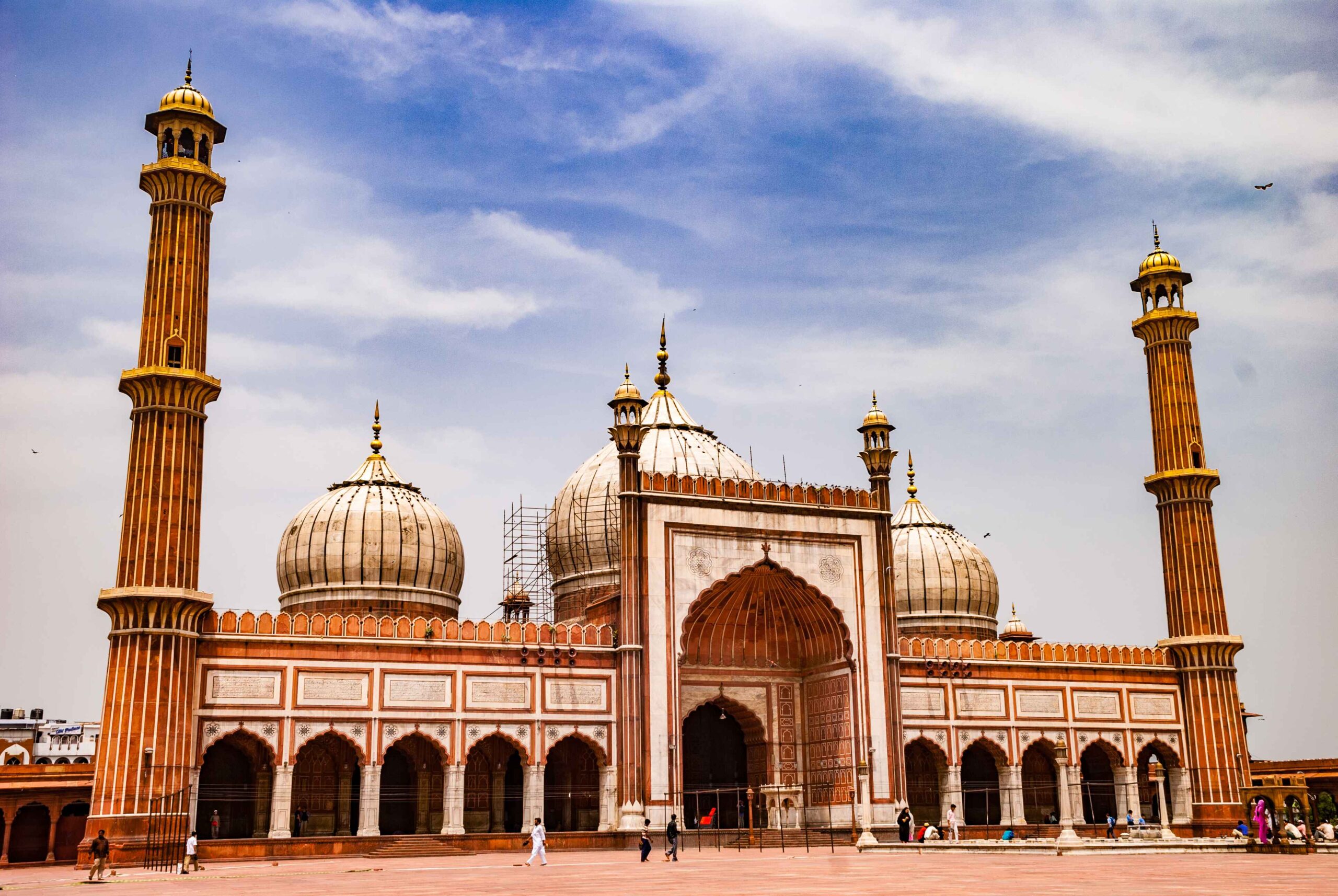Jama Masjid Delhi is India’s most stunning mosque, which represents the magnificence of Mughal architecture. Jama Masjid was constructed by Emperor Shah Jahan as a historical and religious monument in Old Delhi. If you are a history enthusiast, an architecture enthusiast, or a traveler wanting to experience the local culture, Jama Masjid is a site that you simply cannot miss. Shahin Travels welcomes you to know more about its historical significance, striking architecture, and cultural importance.
Historical Significance of Jama Masjid Delhi
Ordered by Mughal Emperor Shah Jahan in 1650, Jama Masjid took six years to complete. More than 5,000 artisans built it under the direction of chief architect Ustad Khalil. Officially named Masjid-i-Jahan-Numa, or “World-Reflecting Mosque,” this magnificent structure was meant to be the central mosque of Delhi.
Jama Masjid has been a witness to many historical happenings occurring there, ranging from royal ceremonies to British colonialism. It continues to be a focal point of worship and an emblem of India’s rich Islamic heritage.
Architectural Beauty of Jama Masjid
Formidable Structure and Design: Jama Masjid Delhi is a great piece of Mughal architecture. Red sandstone and white marble are employed to build the mosque which covers an area of 1,200 square meters and has the capacity to accommodate more than 25,000 people simultaneously. Its humongous courtyard, symmetrical architecture, and imposing minarets are truly awe-inspiring.
Impressive Minarets and Domes: The mosque is dominated by three enormous domes with exquisite marble inlays. There are two striking 40-meter-high minarets with alternate red sandstone and white marble stripes offering a view of the whole Old Delhi. Go up the south minaret and take in the panorama over the city.
Magnificent Prayer Hall: The mosque’s prayer chamber is elongated over 61 meters in length. The finely crafted arches, calligraphic inscription, and lovely floral motifs prove the artistic excellence of the Mughal period. The central mihrab (prayer niche) with black and white marble-finished surfaces makes it even more exquisite.
Magnificent Courtyard and Entrance Gates: Jama Masjid is equipped with three large entrance gates i.e., North, South, and East. The eastern gate was once reserved for the Mughal emperor. The spacious courtyard covered with red sandstone is an area where prayer and meditation can be done in peace.
Cultural and Religious Significance: Jama Masjid is not only a historical monument; it’s a major religious and cultural hub. It is the focal mosque for Friday congregational prayers and major Islamic festivals such as Eid. Thousands of devout pilgrims flock to the mosque to offer their respects in the form of their prayers, with a spiritually revitalizing effect.
The mosque is also a symbol of peace at the community level, and guests from any origin are welcome to witness its glory and heritage. Tourists should dress modestly and respect the sanctity of this sacred location.
Major Sites to Visit Around Jama Masjid Delhi
Red Fort: Just within walking distance from Jama Masjid is the Red Fort, another architectural wonder of Shah Jahan. It is a UNESCO World Heritage Site and a must-see attraction for history lovers.
Chandni Chowk: A busy bazaar adjacent to Jama Masjid, Chandni Chowk provides an energetic taste of Old Delhi life. From mouth-watering street food to wedding outfits, it is heaven for shopaholics and gourmands.
Gurudwara Sis Ganj Sahib: An important Sikh religious place, Gurudwara Sis Ganj Sahib is close by and invites travelers to bask in its serene environment and heritage.
Fatehpuri Masjid: Another old mosque built during the Mughal era, Fatehpuri Masjid is situated at the western end of Chandni Chowk and is renowned for its beautiful architecture.
Visiting Jama Masjid: Things to Know
Best Time to Visit
The ideal time to visit Jama Masjid is October to March, which is winter. Early morning and late evening are the most suitable times for photography and a peaceful experience.
Entry Fee and Timings
- Entry: Free for everyone
- Camera Fee: INR 300 (if having a DSLR or video camera)
- Timings: Open daily from 7:00 AM to 12:00 PM and 1:30 PM to 6:30 PM
- Closed during prayer timings
- How to Visit Jama Masjid Delhi
You can reach Jama Masjid simply by metro, bus, or auto-rickshaw. Jama Masjid Metro Station (Violet Line) is the nearest metro station to the mosque. Alternatively, take a rickshaw from Chandni Chowk Metro Station and reach the mosque in no time.
Why visit Jama Masjid Delhi?
Jama Masjid is more than a house of prayer—it’s a history book that tells us about the splendor of Mughal architecture. The peaceful atmosphere of the mosque, fine decorations, and stunning vistas make it an absolute must for everyone who arrives in Delhi.
- Some Interesting Facts About Jama Masjid
- This magnificent mosque took 6 years and 1 million rupees to construct.
- The mosque’s courtyard can seat more than 25,000 people at one time.
- The eastern entrance was reserved exclusive for Mughal emperors alone.
- Red sandstone and white marble of the mosque building resembles the Taj Mahal.
- Relics of Prophet Muhammad, i.e., his footprints and a hair, are laid to rest here.
Plan Your Visit with Shahin Travels!
Witness the beauty and heritage of Jama Masjid Delhi with Shahin Travels. We provide tailored travel arrangements so that your tour is trouble-free and enjoyable. Book your tour now and experience the magnificence of this Mughal wonder!


